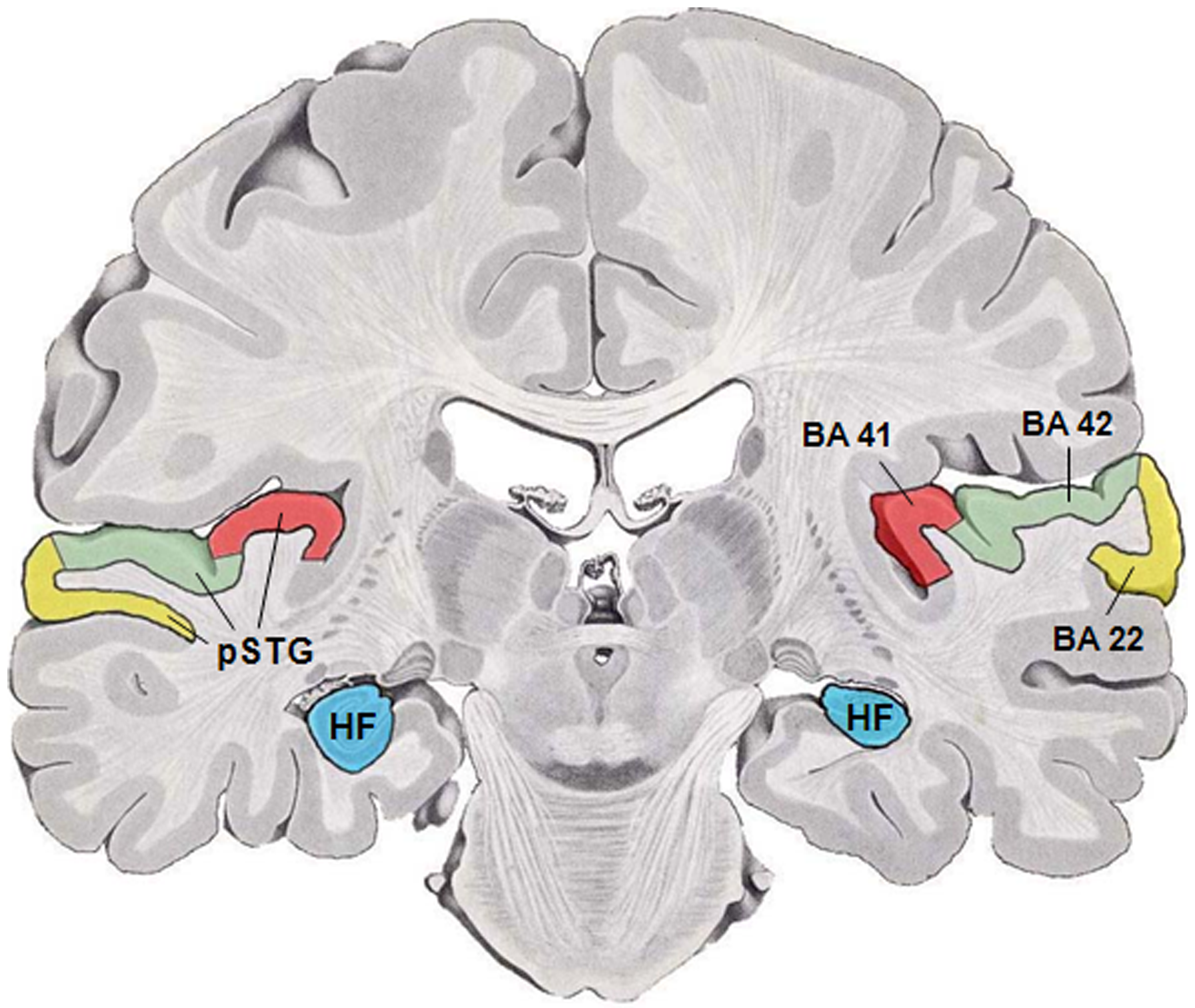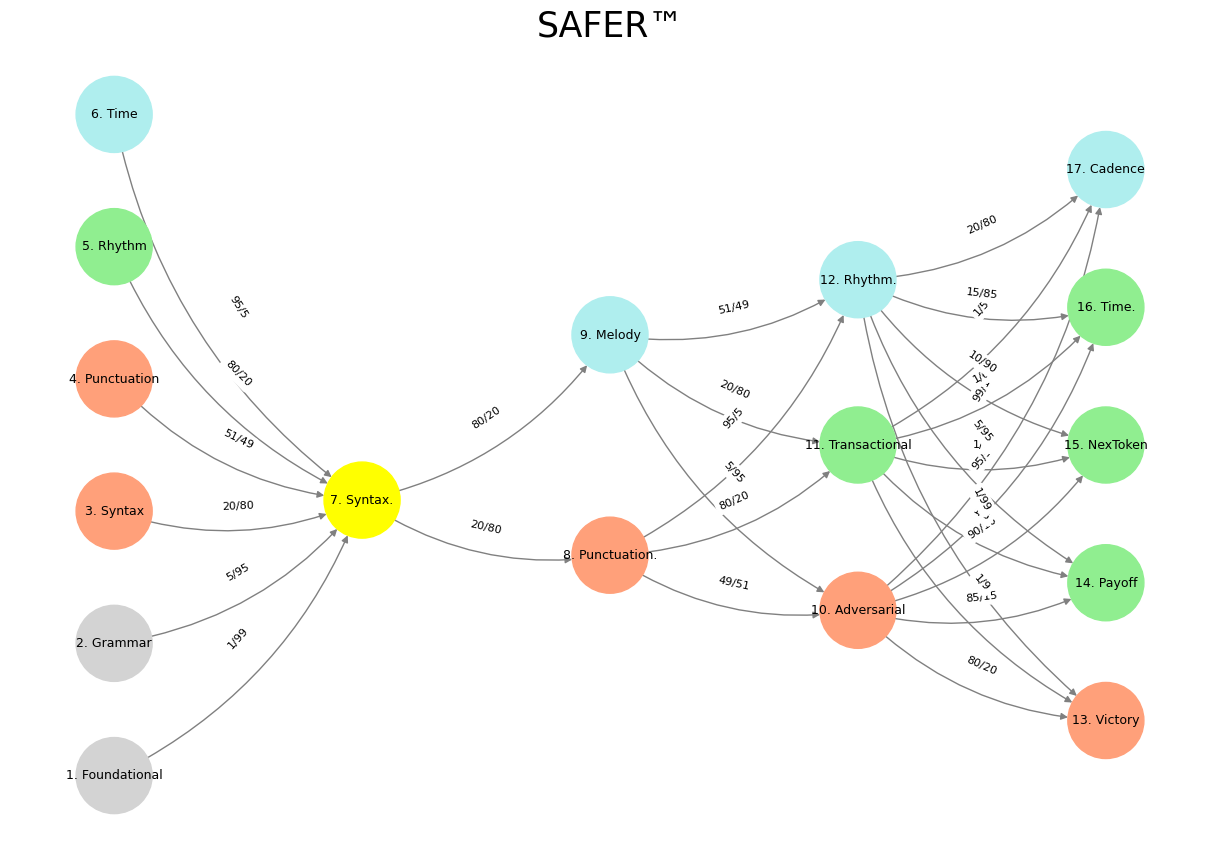Life ⚓️#
Brodmann Area 22 (BA22), commonly associated with Wernicke’s area, and Brodmann Area 44 (BA44), a core component of Broca’s area, serve as two fundamental hubs in the brain’s language network. Though it is tempting to reduce their relationship to a simple input-output dynamic, where BA22 handles language comprehension and BA44 facilitates language production, the reality is far more intricate. The interaction between these areas is embedded in a larger network involving multiple cortical and subcortical structures, forming a complex and dynamic system for language processing.
BA22 is located in the superior temporal gyrus and plays a crucial role in processing auditory and written language input. It is responsible for semantic comprehension—deciphering the meaning of words and sentences. This region is functionally linked to BA39 (angular gyrus) and BA40 (supramarginal gyrus), which contribute to reading and writing comprehension. Wernicke’s area enables the recognition of linguistic symbols, differentiating meaningful words from non-meaningful sounds, and facilitates the initial stages of linguistic cognition. However, while it is central to processing language, it does not produce speech. Instead, it acts as a crucial input node, converting auditory and visual linguistic stimuli into meaningful representations before relaying them forward for further processing.

Fig. 4 Veni-Vid (grammar), Veni-Vidi-Vici (prosody). Yep, Red Queen Hypothesis all the way.#
BA44, located in the inferior frontal gyrus, is a key player in language production, particularly in motor planning for speech and syntactic structuring. It works in close coordination with BA45, another part of Broca’s area, which is involved in higher-order language processing, including the nuanced structuring of sentences. Together, BA44 and BA45 coordinate the articulation of coherent speech, ensuring that phonemes are formed in a grammatically and semantically appropriate sequence. Without BA44’s precise motor programming, spoken language would lack the fluidity and grammatical integrity necessary for effective communication.
The arcuate fasciculus, a major fiber tract, serves as the bridge between Wernicke’s area (BA22) and Broca’s area (BA44/45). This pathway allows for the seamless transformation of language comprehension into language production, enabling individuals to hear, process, and then verbalize words fluently. Damage to this connection results in conduction aphasia, a condition in which individuals can understand language but struggle to repeat words correctly, highlighting the necessity of this fiber bundle in integrating comprehension with production. However, communication between BA22 and BA44 is not strictly unidirectional. While Wernicke’s area relays processed linguistic input to Broca’s area, Broca’s area also sends feedback signals to Wernicke’s area, refining language processing in real time.
Beyond this direct loop, BA22 is also interconnected with BA37, the fusiform gyrus, which plays a role in word recognition. The recognition of whole words as visual entities, rather than as isolated phonemes, enhances reading fluency and is particularly important in written language processing. Additionally, the production of spoken language is not solely dictated by BA44. The motor cortex (BA4), the cerebellum, and the basal ganglia all contribute to the execution of speech. The motor cortex controls the fine motor movements necessary for articulation, while the cerebellum refines the coordination and timing of speech. The basal ganglia, particularly through the caudate nucleus and putamen, regulate the smooth initiation and execution of speech, ensuring that verbal output is not only structurally sound but also fluid and well-paced.
Interhemispheric communication further refines language processing. The corpus callosum, the largest white matter structure in the brain, connects homologous regions across both hemispheres, allowing for the integration of linguistic information. While it contains approximately 200–300 million axonal projections, only about 2% of cortical neurons connect via the corpus callosum. This relatively limited direct interhemispheric connectivity implies that while the two hemispheres interact, much of language processing remains lateralized within the dominant hemisphere. The proportion of corpus callosum fibers dedicated specifically to the connection between the left and right BA22 is not precisely quantified in current literature, but their function is significant. These interhemispheric connections allow for the integration of auditory input from both ears, facilitating sound localization and ensuring cohesive linguistic processing. They also contribute to bilateral synchronization of language comprehension, enabling more efficient processing of speech under complex auditory conditions.
The interplay between BA22 and BA44, as well as their associated structures, underscores the sophistication of the brain’s language network. While it is useful to conceptualize BA22 as the input region and BA44 as the output region, this simplification belies the deeply interconnected nature of language processing. The involvement of the arcuate fasciculus, the fusiform gyrus, the cerebellum, the basal ganglia, and interhemispheric fibers of the corpus callosum reveals that language is not merely a linear process but a multidimensional and dynamic system that continuously integrates sensory, motor, and cognitive elements to enable effective communication.
Show code cell source
import numpy as np
import matplotlib.pyplot as plt
import networkx as nx
# Define the neural network layers
def define_layers():
return {
'Suis': ['Foundational', 'Grammar', 'Syntax', 'Punctuation', "Rhythm", 'Time'], # Static
'Voir': ['Syntax.'],
'Choisis': ['Punctuation.', 'Melody'],
'Deviens': ['Adversarial', 'Transactional', 'Rhythm.'],
"M'èléve": ['Victory', 'Payoff', 'NexToken', 'Time.', 'Cadence']
}
# Assign colors to nodes
def assign_colors():
color_map = {
'yellow': ['Syntax.'],
'paleturquoise': ['Time', 'Melody', 'Rhythm.', 'Cadence'],
'lightgreen': ["Rhythm", 'Transactional', 'Payoff', 'Time.', 'NexToken'],
'lightsalmon': ['Syntax', 'Punctuation', 'Punctuation.', 'Adversarial', 'Victory'],
}
return {node: color for color, nodes in color_map.items() for node in nodes}
# Define edge weights (hardcoded for editing)
def define_edges():
return {
('Foundational', 'Syntax.'): '1/99',
('Grammar', 'Syntax.'): '5/95',
('Syntax', 'Syntax.'): '20/80',
('Punctuation', 'Syntax.'): '51/49',
("Rhythm", 'Syntax.'): '80/20',
('Time', 'Syntax.'): '95/5',
('Syntax.', 'Punctuation.'): '20/80',
('Syntax.', 'Melody'): '80/20',
('Punctuation.', 'Adversarial'): '49/51',
('Punctuation.', 'Transactional'): '80/20',
('Punctuation.', 'Rhythm.'): '95/5',
('Melody', 'Adversarial'): '5/95',
('Melody', 'Transactional'): '20/80',
('Melody', 'Rhythm.'): '51/49',
('Adversarial', 'Victory'): '80/20',
('Adversarial', 'Payoff'): '85/15',
('Adversarial', 'NexToken'): '90/10',
('Adversarial', 'Time.'): '95/5',
('Adversarial', 'Cadence'): '99/1',
('Transactional', 'Victory'): '1/9',
('Transactional', 'Payoff'): '1/8',
('Transactional', 'NexToken'): '1/7',
('Transactional', 'Time.'): '1/6',
('Transactional', 'Cadence'): '1/5',
('Rhythm.', 'Victory'): '1/99',
('Rhythm.', 'Payoff'): '5/95',
('Rhythm.', 'NexToken'): '10/90',
('Rhythm.', 'Time.'): '15/85',
('Rhythm.', 'Cadence'): '20/80'
}
# Calculate positions for nodes
def calculate_positions(layer, x_offset):
y_positions = np.linspace(-len(layer) / 2, len(layer) / 2, len(layer))
return [(x_offset, y) for y in y_positions]
# Create and visualize the neural network graph
def visualize_nn():
layers = define_layers()
colors = assign_colors()
edges = define_edges()
G = nx.DiGraph()
pos = {}
node_colors = []
# Create mapping from original node names to numbered labels
mapping = {}
counter = 1
for layer in layers.values():
for node in layer:
mapping[node] = f"{counter}. {node}"
counter += 1
# Add nodes with new numbered labels and assign positions
for i, (layer_name, nodes) in enumerate(layers.items()):
positions = calculate_positions(nodes, x_offset=i * 2)
for node, position in zip(nodes, positions):
new_node = mapping[node]
G.add_node(new_node, layer=layer_name)
pos[new_node] = position
node_colors.append(colors.get(node, 'lightgray'))
# Add edges with updated node labels
for (source, target), weight in edges.items():
if source in mapping and target in mapping:
new_source = mapping[source]
new_target = mapping[target]
G.add_edge(new_source, new_target, weight=weight)
# Draw the graph
plt.figure(figsize=(12, 8))
edges_labels = {(u, v): d["weight"] for u, v, d in G.edges(data=True)}
nx.draw(
G, pos, with_labels=True, node_color=node_colors, edge_color='gray',
node_size=3000, font_size=9, connectionstyle="arc3,rad=0.2"
)
nx.draw_networkx_edge_labels(G, pos, edge_labels=edges_labels, font_size=8)
plt.title("SAFER™", fontsize=25)
plt.show()
# Run the visualization
visualize_nn()


Fig. 5 Nodes. Yellow is G1 & G2 representing cranial and dorsal root ganglia. Melody is N1, N2, N3 representing basal ganglia, thalamus, and hypothalamus. Punctuation is N4 & N5 representing brainstem and cerebellum. Transactional is G3, the presynaptic autonomic ganglia, whereas Rhythm is parasympathetic and Adverarial is sympathetic – aligning with adante and presto.#

